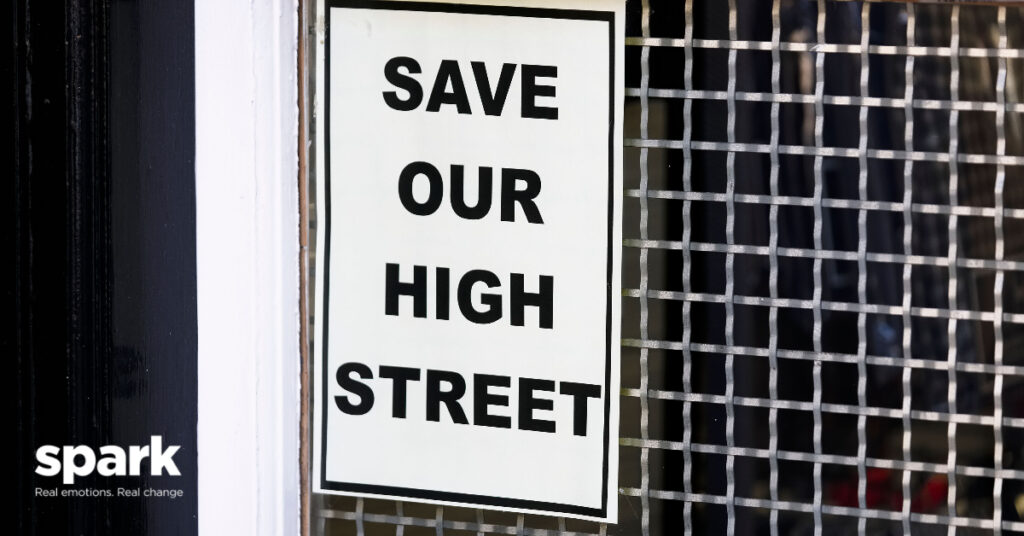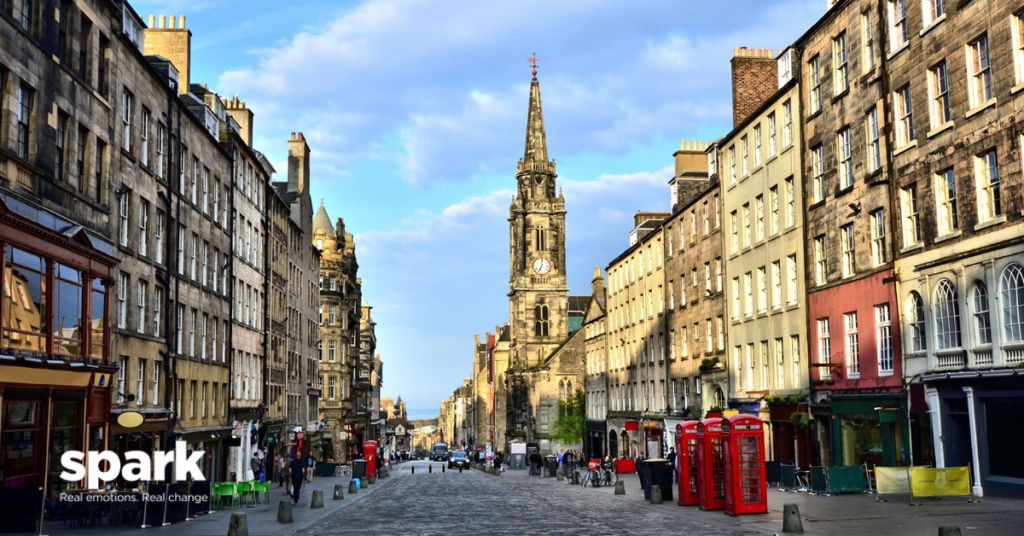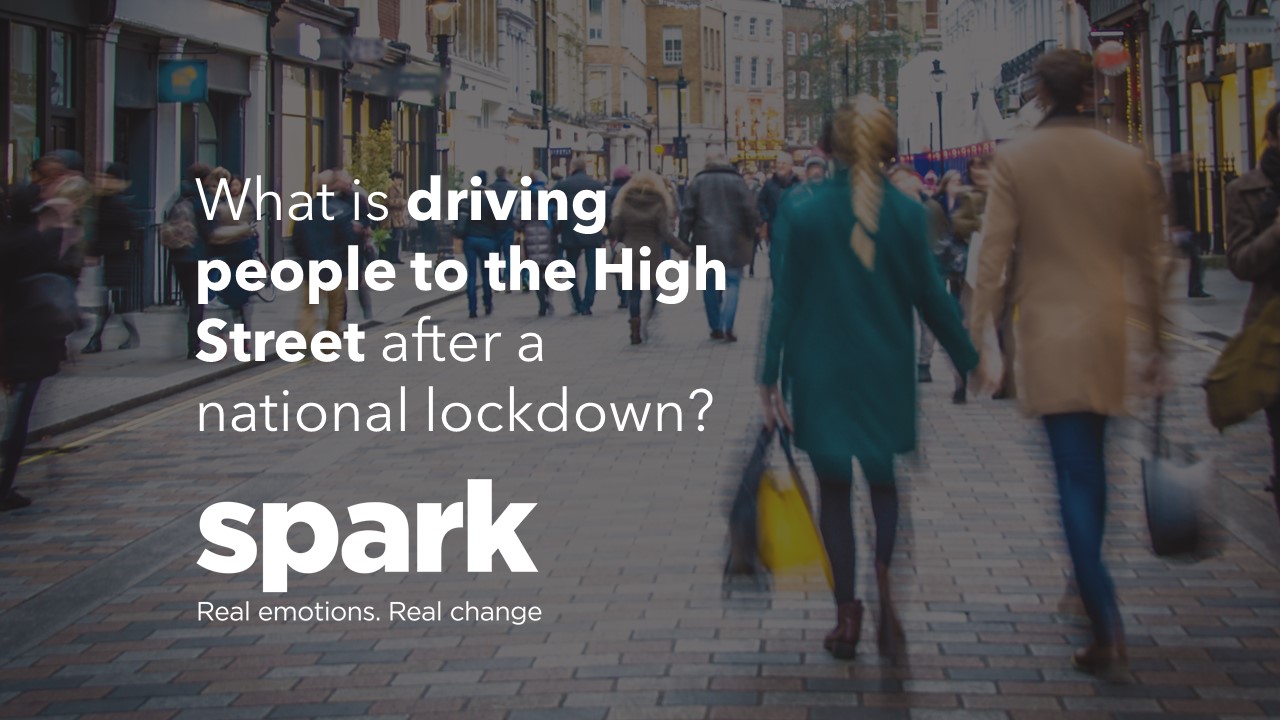As we edge closer to the end of the second national lockdown in England, we wanted to understand what will be driving people back to the High Street. With reports of many High Street stalwarts being under pressure, or even closing, the High Street is going through a semi enforced transformation. Only recently, it was reported that Peacocks and Jaeger have gone into administration, putting 4700 jobs at risk (Retail Gazette).
Getting people back to the UK High Street is going to be crucial to the economic recovery from the COVID-19 pandemic. With all sorts of businesses effected, from pubs to barbers to clothing shops, they are the lifeblood of our community. The uncertainty of the pandemic even stopped 3 in 10 business reopening after the first Lockdown (The Guardian). It appears that the various Government schemes were a more viable solution than opening up with reduced trade.
We shouldn’t throw all the blame at COVID-19 for the situation of UK High Streets, they were struggling before 2020, with thousands of jobs lost with the closures of many High Street stores, businesses like Mothercare, Bonmarche and Karen Millen (The Guardian). Clearly, COVID-19 has accelerated the demise, but it isn’t all bad news.
The High Street is changing in front of our eyes, Which? published an article towards the end of 2019 which spoke about how the UK High Street is almost going back in time. UK High Streets are becoming unique and exciting, with numerous independents opening around the country, with businesses like hair and beauty shops, markets and tea rooms opening up (Which?). The COVID-19 pandemic will have put the brakes on this movement, but once we move into 2021, with vaccines, more efficient testing and even more sophisticated treatments, we will see more and more head back to the High Street. 2021 and beyond could be really exciting for the future of the High Street, putting High Streets all over the country the heart of the community.

Why are people visiting the High Street during the COVID-19 pandemic?
We spoke to a nationally representative sample of over 500 UK adults to truly understand what drove them back to the High Street after the first UK lockdown. We found out that only 2 in 3 visited the High Street after retailers reopened. Interestingly, we found that in the older age groups (55 +) were most likely to have visited the High Street
We wanted to understand the drivers behind why people have visited the High Street and we found that 1 in 3 visited the High Street just to get out of the house, with slightly more doing so to buy a specific item.
When we dove deeper into the kinds of businesses people were visiting, the five most popular were;
- Restaurants (60%)
- Café/Coffee Shop (54%)
- Pub/bar (54%)
- Hairdresser/barber (43%)
- Outdoor market (23%)

How the UK feels about visiting the High Street
In addition to understanding what types of businesses people were going to, we wanted to understand how the UK really felt about visiting the High Street. The two most used words to describe how people felt about visiting the High Street were ‘Happy’ and ‘Anxious’. People were clearly grateful to be out of the house, but there is a real concern about contracting COVID-19.
To gain a deeper understanding of how people are feeling about visiting the High Street, we used our Spark Emotional Wheel to understand their emotions. We found that people felt Eager to visit the High Street, which shows how after months being cooped up indoors, people were desperate to get back to some sort of normality.
How you can help
With the second national lockdown in England coming to an end on the 2nd of December, we can expect to see similar emotions and behaviour to the end of the first lockdown. Clearly, hospitality will be popular, but this will be dependent on what tier level their region is in and if people from different households can mix or not. There will still be similar levels of anxiety that businesses will have to address to ensure their customers feel comfortable visiting their establishments. They must ensure that every measure is taken against the virus, but businesses need to bring a sense of fun and excitement to the High Street to help create positive emotions.
At Spark Emotions, we are able to understand your customers’ behaviour at the very top of the purchase funnel through our trends and foresight business unit. Understanding the macro effects that impact your customers’ behaviour helps your business to identify opportunities and make improvements to better suit your customers’ needs. Our team of industry leaders and consumer psychologists partner with you to provide actionable insights proven to deliver business growth.
Get in touch with us by filling in our contact form to find out how we can help you grow your business.

Written by Jack Hillaby, Head of Business Development at Spark Emotions
If you have any questions, feel free to reach out to Jack via email jack.hillaby@sparkemotions.com or connect with him on LinkedIn





